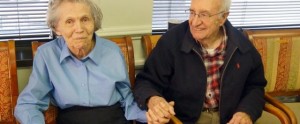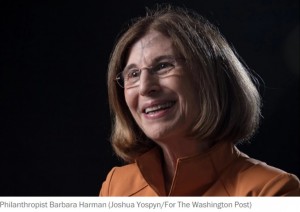Across the globe, 47 million people are living with Alzheimer’s and other dementias. This June, The Alzheimer’s Association is raising awareness for this disease by encouraging people to #GoPurple (the official color of the Alzheimer’s Movement) and learn how to lower their risk, learn about early detection and treatment, and help care for those affected.
The Catalogue is proud to highlight three organizations that work with senior populations affected by Alzheimer’s and other dementias:
Insight Memory Care Center
Of the five million Americans with Alzheimer’s disease, 74% live at home with family and friends, and the number is expected to grow exponentially. As the only licensed day center in the region focused specifically on persons with dementia, IMCC is dedicated to caring for them, and providing education and support for their families. Two early stage programs offer opportunities for socialization, mental stimulation (such as brain games), and support groups for individuals recently diagnosed. Ten hours a day, five days a week, those with mid-stage Alzheimer’s stimulate their minds through art and music therapy, physical therapy, outings, and Tai Chi; those with more advanced dementia participate in specialized activities and get help with personal care. The Center also offers free educational opportunities to caregivers and the community as well as scholarships to families who could not otherwise afford its services.
The Downtown Clusters Geriatric Day Care Center
Founded in 1976, when seniors were being abandoned in hospitals, or even on the streets, the Downtown Cluster’s Geriatric Day Care Center provides crucial therapeutic and supportive services to at-risk, functionally-impaired, and low-income elders — enabling them to remain in the communities and homes that they love. Preventing isolation and fostering independence are key, so the Center (whose average patient is 82) provides health education and monitoring, home visits, occupational and physical therapy, counseling, food distribution, social and cultural outings, respite subsidies and support groups for caregivers of all ages, and even telephone reassurance for those in need of a friendly voice. Intergenerational programs nurture connections between seniors and youth and encourage lifelong health and wellness; the A-Team program brings together toddlers and Alzheimer’s patients, tapping into seniors’ nurturing skills and enhancing verbalization. The only adult day center in Ward 2, the Center provides over 33,000 hours of care each year.
Iona Senior Services
A key component of aging well is “aging in place,” which incidentally saves billions of dollars that might otherwise be spent on institutional care. For over 35 years, Iona Senior Services has provided the support that makes this possible, enabling older people — whose numbers are greater now than at any time in history — to stay (and thrive) in their own homes. Of Iona’s clients, 80% are financially insecure, 60% live alone, and many have difficulty shopping, preparing meals, managing money, doing housework, and taking medication. So Iona offers a full range of services: adult day programs for some, coordination of in-home and out-of-home services for others; community programs like group meals, fitness classes, visual art and creative writing courses, and recreational activities that promote a healthy lifestyle; coordination of transportation to and from doctors appointments; and meal delivery and volunteer companions for those who are homebound. The Client Care Fund supports seniors whose families can’t afford even the most modest fees.



 On May 31st, President Obama issued a
On May 31st, President Obama issued a 

 The Catalogue also received coverage in Washington Life Magazine’s June issue! The article focused on individuals in the community working for the greater good – and our very own Barbara Harman was one of the profiles in the issue (profile text shown in full below). To see the issue,
The Catalogue also received coverage in Washington Life Magazine’s June issue! The article focused on individuals in the community working for the greater good – and our very own Barbara Harman was one of the profiles in the issue (profile text shown in full below). To see the issue, 
 Today’s blog post was written by Surjeet Ahluwalia, Executive Director of
Today’s blog post was written by Surjeet Ahluwalia, Executive Director of  At Asian American LEAD (AALEAD), we serve youth who don’t fit within the model minority myth. For instance, Mei begins her day in her 1 bedroom apartment at Museum Square in Chinatown, DC, which she shares with her brother and father. They have received misinformation many times from their landlord that they have to leave their home. Their father has often shared his concerns about what’s happening in their building with community members, but the constant pushing is taxing on him. Mei and her brother don’t want to have to switch high schools. They want to stay in their home, but also to have a peaceful living situation. After hard days at home and at school, Mei and her brother head over to afterschool programs with AALEAD.
At Asian American LEAD (AALEAD), we serve youth who don’t fit within the model minority myth. For instance, Mei begins her day in her 1 bedroom apartment at Museum Square in Chinatown, DC, which she shares with her brother and father. They have received misinformation many times from their landlord that they have to leave their home. Their father has often shared his concerns about what’s happening in their building with community members, but the constant pushing is taxing on him. Mei and her brother don’t want to have to switch high schools. They want to stay in their home, but also to have a peaceful living situation. After hard days at home and at school, Mei and her brother head over to afterschool programs with AALEAD.
